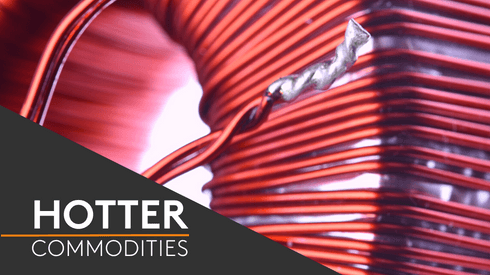The London Metal Exchange has received “a good number of bids” for the board to consider at its meeting on Thursday February 23.
NYSE Euronext, the CME Group and Intercontinental Exchange (ICE) have all, apparently, submitted bids.
Perhaps the most remarkable thing about the news, which broke last year, that several exchanges were preparing to mount bids to take over the LME is that they had not come sooner.
The current climate of thinking on the merits of exchanges merging into much larger international organisations, often with their own clearing, has been with us for some four years now.
The LME’s relative immunity to this wave, until now, can be ascribed to two things.
First, it was running, on balance, very successfully and successful organisations don’t usually welcome bid approaches.
Second, it was perceived as odd thanks to its retention of the ring, high volumes (by futures market standards) of physical throughput, daily dates and settlement practices.
Triggers for LME sale
So is the wave of really serious approaches now simply a result of the intensification of the merger mania in futures markets, or does it have specific triggers?
For most of the 50-odd years I have been fascinated by the exchange, it would have been fair to characterise it as conservative – even, at times, ultra-conservative. But that is certainly not a charge that can be made against it in the era of current chief executive Martin Abbott.
So a lack of innovation cannot be cited as contributing to the bid approaches. Indeed, someone with my background might be expected to blame an excess of innovation in the past few years for inciting the prospective bidders to move. But I do not.
The changes that the exchange has introduced have all been in response to member demands, either express or, in terms of migrating to alternative and mostly electronic platforms, implied.
It should also not be forgotten that quite a few changes have involved reversing earlier initiatives that had proved unsuccessful.
Managing change
But there are two developments that have brought exogenous change to the market which have proved very hard for the exchange to manage.
These are, first, the huge growth in ultra short-term trading, mostly driven by algorithmic programmes; and second, the contentious issue of warehouse deliver-out rates.
The striking thing about these is that they are at the opposite extremes of the timescale.
Algorithmic trading is so fast that it can give rise to glitches like the recent supposed “fat finger” copper trade that caused so much unhappiness.
Meanwhile, there has never, in the history of the exchange until recently, been a precedent for clients having to wait as long as four months for warehouses to let them have their own metal.
What both factors have in common is that they derive from initiatives with which the exchange itself was not actively involved, though it certainly had a need to react to them.
Given that neither the algorithmic traders nor the warehouses are members of the exchange, the LME’s ability to react to changes in their behaviour is limited. It is fair to say that, within the constraints of that relationship, the exchange has done about as much as could be expected of it.
Someone else’s headache
This must lead at least some of the people responsible for dealing with these problems to think that it would not be the worst thing to happen to them if somebody else were to take over these headaches.
This, in turn, could start the rest of us thinking about the merits and demerits of a new generation of managers of the exchange operating with less of a sense of the long history that has always guided its management.
And here I must be showing my age, as I cannot believe that a generation of new brooms will make any better fist of managing these two particular problems than the present generation, which will perhaps become the last of the long line of exchange managers to retain a sense of its history.
Trevor Tarring is the former chairman of Metal Bulletin plc.





